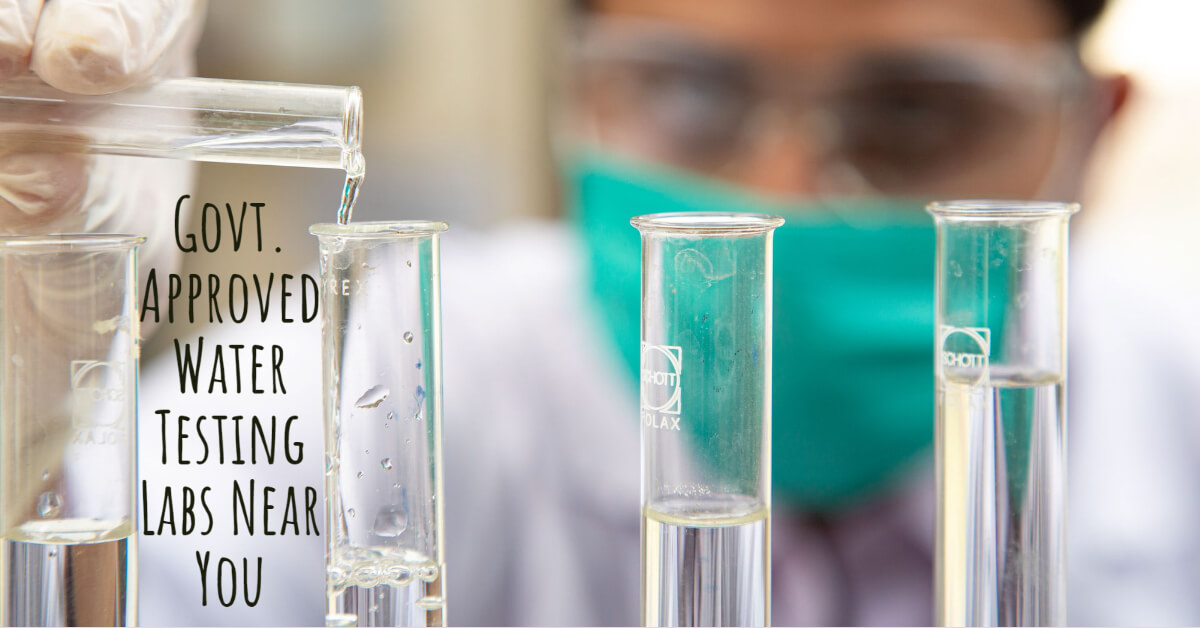Discover Reliable Well Water Testing Services for Your Satisfaction
Discover Reliable Well Water Testing Services for Your Satisfaction
Blog Article
Recognize the Relevance of Water Testing in Preserving Compliance With Wellness Criteria
In the realm of public wellness, recognizing the significance of water testing is crucial for preserving conformity with rigorous health criteria set forth by authoritative bodies like the That and EPA. What are the exact techniques used in water testing, and how do they ensure that our most important source stays uncontaminated?
Key Health Requirements for Water
Making certain the safety and high quality of alcohol consumption water is vital, as it directly affects public health and wellness. Stringent health requirements are established to protect people from waterborne conditions and pollutants that can result in adverse health impacts. The Globe Wellness Company (THAT) and nationwide companies like the Epa (EPA) in the United States set guidelines and regulative limitations for various physical, chemical, and biological criteria in drinking water.
These requirements are based on substantial clinical study and are occasionally reviewed to include technological improvements and brand-new searchings for. Key specifications include microbial contaminants such as infections and microorganisms, chemical contaminants like lead and arsenic, and physical characteristics such as turbidity and pH degrees. Compliance with these standards guarantees that water is without hazardous substances and is cosmetically pleasing to the customer.
Water testing plays a crucial function in verifying conformity with these health requirements. Routine monitoring and testing help determine prospective issues prior to they position a significant health threat, permitting for prompt treatment and remediation. By sticking to these requirements, water companies can preserve public self-confidence in the safety of the area's water, thereby safeguarding public health properly.
Common Contaminants Found
When analyzing water quality, what are the most prevalent contaminants that tend to be identified? Microbial virus, including bacteria like Escherichia protozoans and coli such as Giardia and Cryptosporidium, are frequently found in water resources, positioning significant wellness risks if ingested.
Chemical impurities are additionally a key issue. Nitrates, frequently arising from agricultural fertilizers, can result in major wellness problems, especially in babies. Heavy steels such as lead, arsenic, and mercury, typically introduced via commercial release or natural mineral down payments, can have long-term toxic impacts. Volatile natural compounds (VOCs) and chemicals, results of agricultural practices and industrial activities, additional add to water contamination.
Inorganic compounds such as fluoride and chlorine, although in some cases deliberately contributed to water for health and wellness benefits, can end up being bothersome at elevated degrees. Emerging impurities, including drugs and individual care items, are progressively being discovered, raising issues about their possible impact on human health and wellness and ecosystems. Attending to these contaminants is crucial for protecting public health and making sure water quality compliance.
Methods of Water Testing
Water testing's accuracy is critical for ensuring and recognizing pollutants safety and security conformity. Water Testing Service. To accomplish accurate outcomes, numerous approaches are employed, each customized to find specific impurities and align with regulative criteria. One common strategy is spectrophotometry, which determines the absorption of light by chemical substances in the water, thus recognizing components like nitrates and phosphates. This approach is helpful for its sensitivity and specificity.
Chromatography is an additional advanced approach utilized, particularly for organic pollutants. By dividing mixes into specific parts, it permits thorough analysis of complex contaminants. Gas chromatography and liquid chromatography are generally utilized versions, each fit for different compound types.
Microbiological testing is important for detecting microorganisms such as bacteria, infections, and protozoa. Strategies such as membrane layer purification and multiple-tube fermentation are used to culture and determine microbial presence. These techniques are essential in protecting public health by ensuring microbial safety.

Advantages of Routine Screening
Recognizing the various approaches of water testing highlights the need of routine testing methods to maintain water top quality. Routine water screening acts as an aggressive step to recognize prospective pollutants before they rise into major wellness threats. By constantly monitoring water top quality, companies can discover toxins such as microorganisms, heavy metals, and chemical deposits early, allowing for timely treatments that stop carcinogen and pricey remediation initiatives.

Additionally, routine testing makes certain that water supply comply with well-known health and wellness criteria and regulations. This compliance is vital for staying clear of legal charges and maintaining the count on of stakeholders and customers. Consistent water this link quality assessments aid identify fads or variations in water structure, giving important information that can get redirected here assist operational choices and resource administration approaches.
In industries such as local water food, supply, and medical care processing, maintaining high water top quality requirements is important to securing public wellness. Generally, the advantages of regular water screening extend beyond compliance, improving functional efficiency, public security, and ecological stewardship.
Steps to Guarantee Compliance
To make sure compliance with water quality guidelines, companies must carry out a structured technique incorporating both preventative and restorative actions. A comprehensive risk analysis should be performed to identify potential contamination resources and vulnerabilities within the water system. This evaluation educates the growth of a customized water administration strategy that outlines particular checking protocols, regularity, and specifications needed to meet governing standards.
Subsequent to the planning stage, companies need to establish a schedule for regular water testing that follows both regional and national standards. Utilizing recognized laboratories guarantees the precision and integrity of test outcomes. Any kind of discrepancies from appropriate water high quality requirements have to prompt instant corrective activities, such as system cleaning, repairs, or modifications in therapy procedures.
Furthermore, preserving thorough documents of all screening tasks, outcomes, and rehabilitative activities is crucial for demonstrating compliance during audits and assessments. Normal training and updates for personnel associated with water management procedures are vital to ensure they recognize present regulations and finest techniques.
Final Thought
Regular water screening is important for preserving conformity with health and wellness requirements set by organizations such as that and EPA. By recognizing pollutants like microbial pathogens, heavy metals, and chemicals, screening guarantees that drinking water remains risk-free. Proactive tracking secures public wellness, sustains governing conformity, and fosters confidence in water quality management. In addition, consistent screening promotes ecological sustainability and safeguards neighborhoods, protecting important water resources for future generations. Compliance with these criteria is important for the wellness of culture.
In the page world of public health, understanding the value of water screening is indispensable for maintaining compliance with rigid health and wellness requirements set forth by authoritative bodies like the That and EPA. By sticking to these standards, water service providers can preserve public confidence in the safety of the area's water supply, thus guarding public health and wellness efficiently.

In industries such as community water food, supply, and healthcare processing, preserving high water top quality standards is important to safeguarding public health.
Report this page